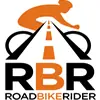Recreational/Touring Clubs
Clubs should try to promote fun rides and tours. Here are some ways you can identify a club that's doing it right.
1. Good clubs offer a full schedule of weekend rides and occasional longer tours.
2. Good clubs grade rides in terms of distance, speed and ability so that newcomers don't accidentally bite off more than they can chew. One sure sign of a poor club is when a ride rated "easy" turns into a race as the leader shows off his fitness and power.
3. Good clubs have rides that encourage participation from everyone. They sometimes sponsor low-key time trials (safe races against the clock) and encourage everyone to participate, regardless of fitness or skill.
4. Good clubs have social gatherings like potlucks or "restaurant rides" that bring people together off the bike.
More: 7 Beginner Tips for a Mass-Start Event
5. Good clubs are active in politics. They support local and state bicycle advocacy organizations. They often are the force behind bicycle path construction, traffic ordinances that favor cyclists, and campaigns urging residents to reduce air pollution by commuting to work by bike.
6. Good clubs sponsor a major yearly event, such as a century ride. These rides are well organized, safe and promoted to the regional cycling community. Shorter distances will be included to welcome everyone, not just enthusiasts.
7. Good clubs regularly publish a newsletter to keep members motivated and updated on rides and other events.
Racing Clubs
Some recreational/touring clubs have a racing division, while other clubs are strictly racing organizations. They exist to help talented cyclists achieve competitive goals. If you want to race, joining a good racing club is a key step toward realizing your potential.



